Step inside a garage that hums with possibility and the first thing you notice is a solid, well-planned workbench. A smart surface turns clutter into creativity, letting power tools glide, clamps bite, and projects finally take shape. Recent DIY roundups highlight dozens of space-saving, mobile, and modular designs that ordinary homeowners have built with weekend effort and modest budgets. Whether you need heavy-duty load capacity, clever fold-away tricks, or built-in dust control, today’s best ideas mix practicality with ingenious detail. This collection distills twenty standout garage workbench ideas, each one sized for real garages and packed with tips you can start applying right after the last screw is tightened.
1. Fold-Down Wall-Mount Workbench Saves Floor Space
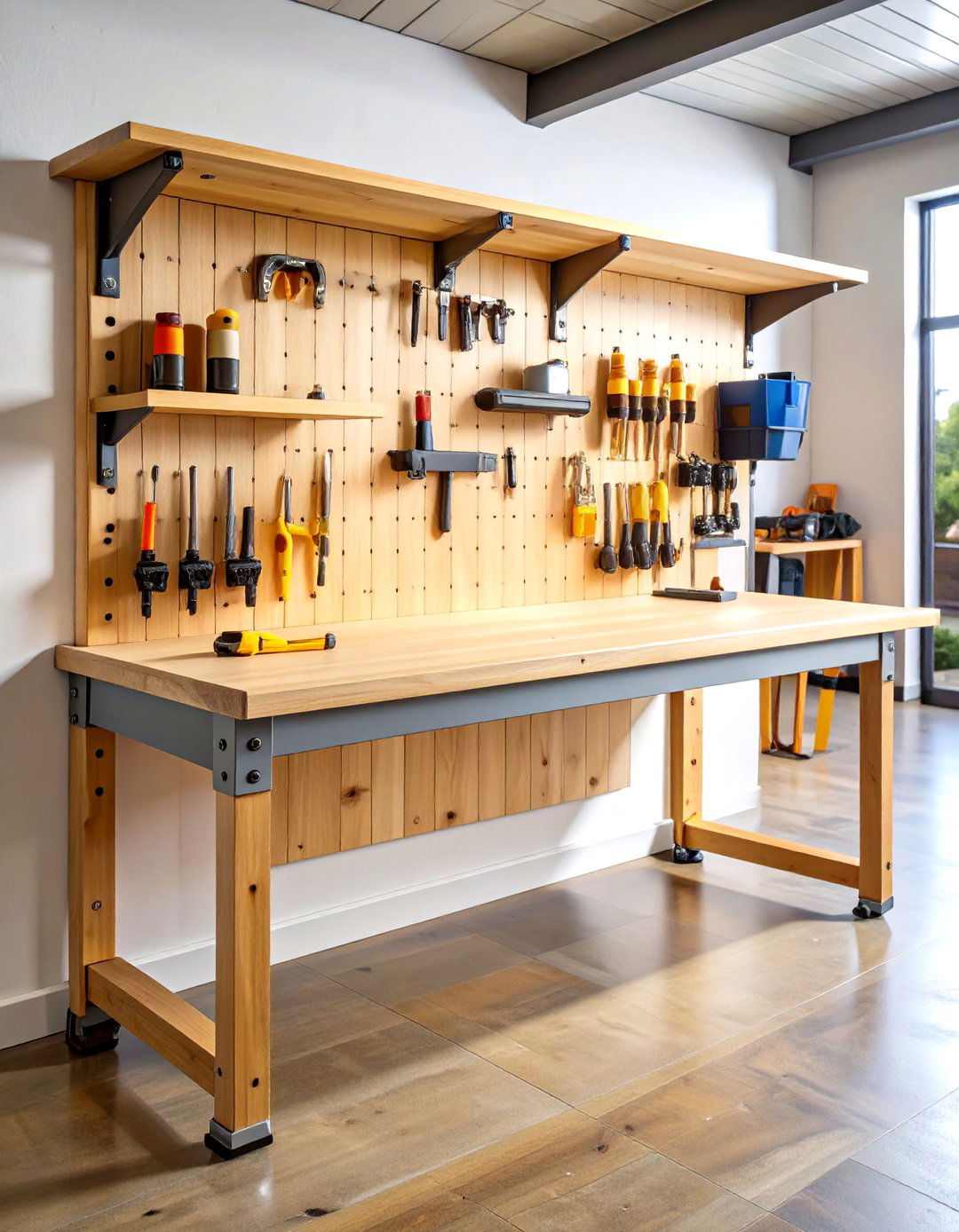
A fold-down wall-mounted workbench frees parking space while still giving you a sturdy 24- to 30-inch-deep surface when you need it. One popular plan hinges a plywood top on heavy-duty shelf brackets so it swings up, then locks level with simple barrel bolts, supporting everyday sanding, soldering, or potting tasks. Add a shallow cleat along the wall edge to keep screws from rolling off, and line the underside with French cleats to store tools when the bench is folded. Pinterest boards show dozens of compact versions under 48 inches long, proving the idea works even in a one-car garage. For occasional work, nothing stows away cleaner.
2. Rolling 4 × 8 Mobile Workbench for Big Projects
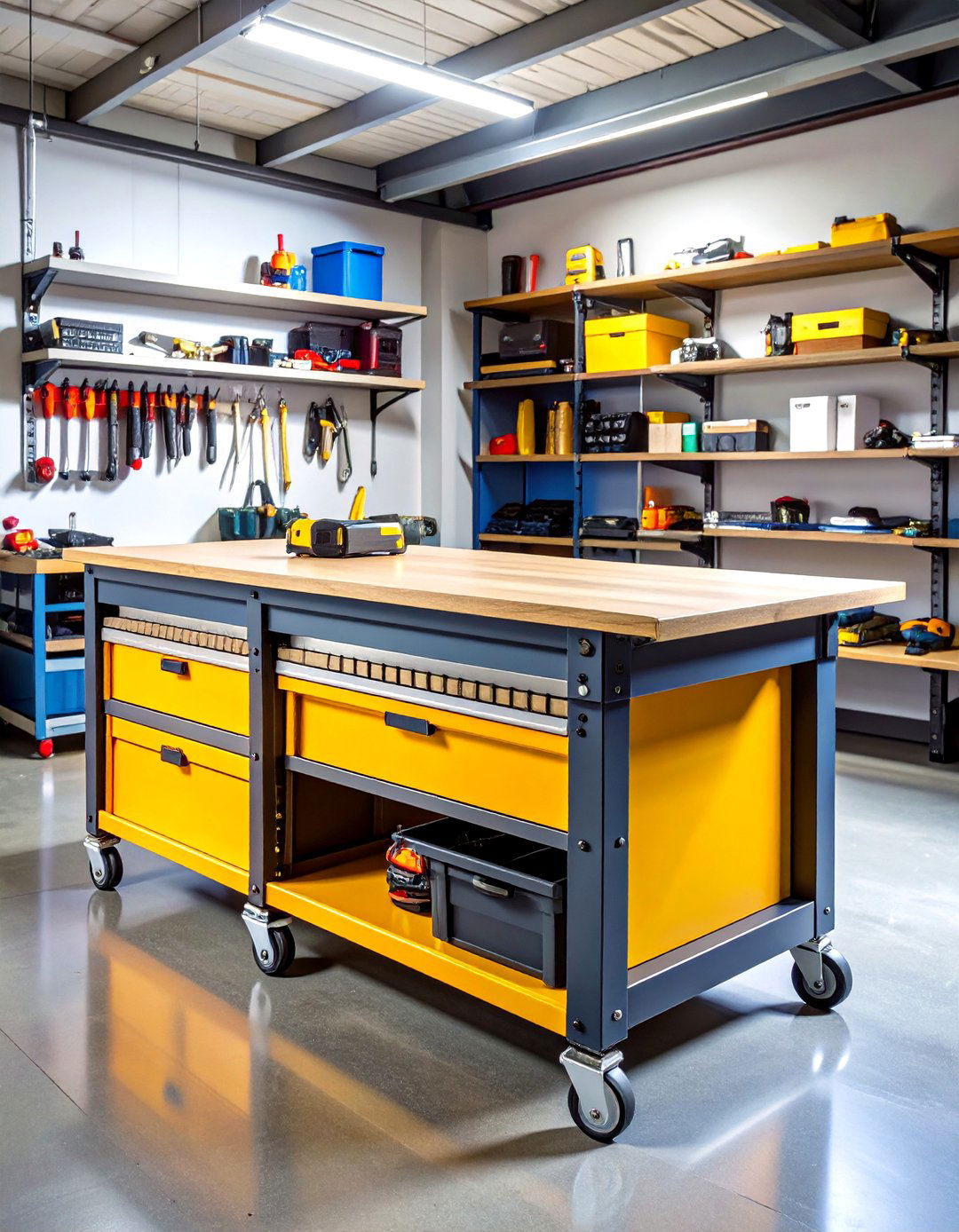
When full-size sheet goods are part of your projects, a rolling 4 × 8-foot bench on locking 5-inch casters becomes a true back-saver. Video tutorials demonstrate how a torsion-box top keeps the span flat while staying light enough to maneuver solo. Builders who completed the design in a single day report that the extra surface doubles as an out-feed table for table-saw cuts, eliminating awkward balancing acts. Add shelves between the legs, and you’ll have storage for sheet goods plus an instant assembly station that rolls wherever the workflow demands. It’s the garage equivalent of a conference table—big, mobile, and indispensable.
3. Compact Flip-Top Workbench Doubles Tool Stations

Unlike fixed benches, a flip-top model pivots a tool platform 180 degrees, letting you keep, say, a planer on one side and a spindle sander on the other without expanding the footprint. Step-by-step builds show a simple locking axle through plywood sides; once flipped, cam latches hold the top rock solid. Makers who chained three flip-tops side-by-side created a continuous seven-foot work surface that hides six benchtop machines until needed, dramatically uncluttering the room. If you dread hefting heavy tools off shelves, this two-for-one carousel keeps everything at waist height and ready to go.
4. Height-Adjustable Ergonomic Workbench
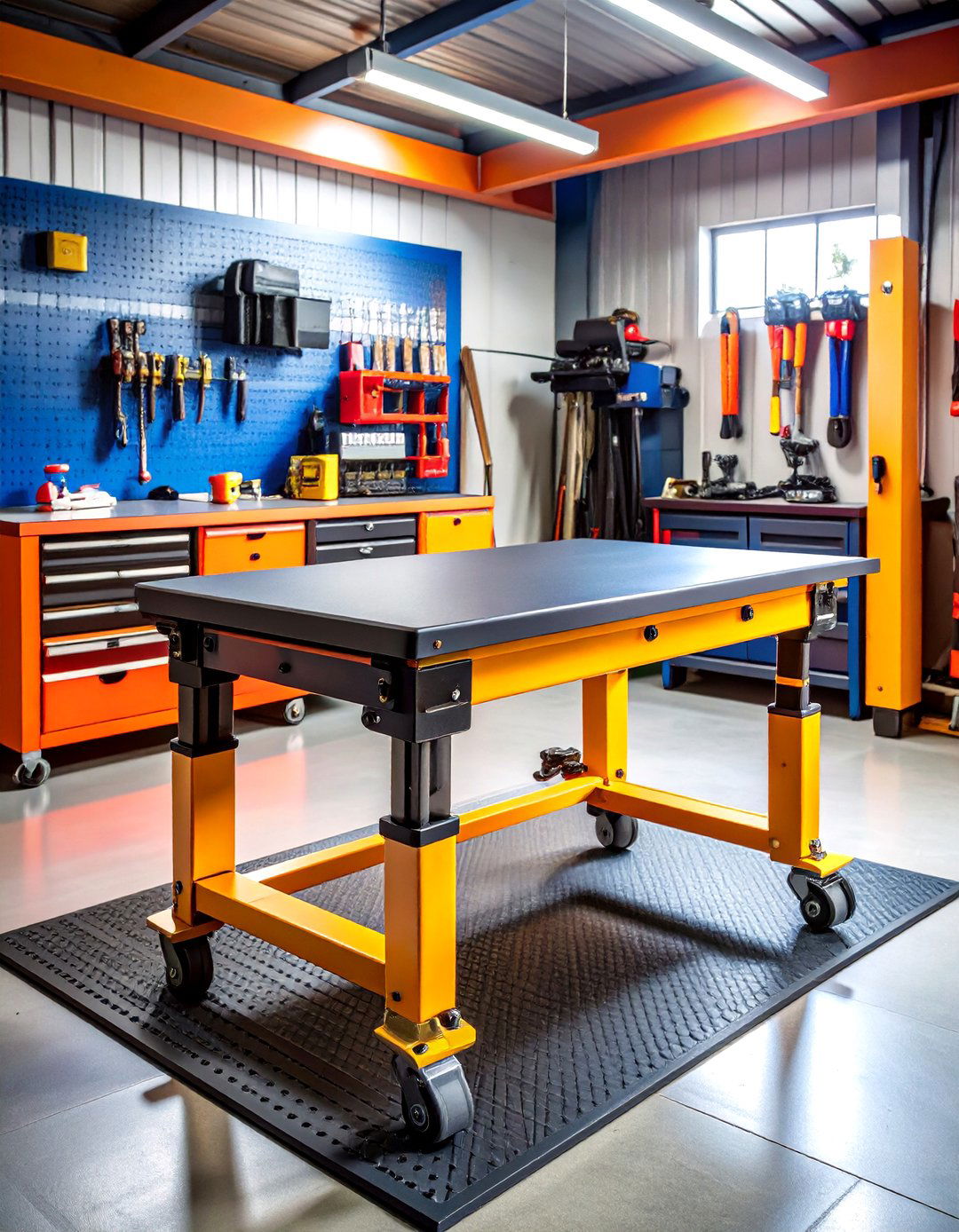
Back strain disappears when the bench rises to meet you, and adjustable-height models now span everything from hand-crank legs to hydraulic lifts rated for 3,000 pounds. Product specs list ranges from 27.5 inches up to a standing-friendly 40 inches, meaning the same surface fits both delicate soldering and heavy assembly. Industrial suppliers explain that piston-assisted legs can shift a fully loaded top with just a squeeze of a lever, a big perk when multiple family members share the workspace. Pair the feature with an anti-fatigue mat and you’ll work longer with fewer aches.
5. Pegboard-Backed Workbench with Integrated Lighting

Tool chaos ends when everything hangs exactly where you need it, and a bench framed by a tall pegboard delivers that order. Retail kits pair a 45-inch hardwood top with a steel back panel, LED task light, and three grounded outlets, supporting 800-plus pounds while keeping cords tidy. Builders often mount a second pegboard under the top to store rarely used jigs, effectively doubling vertical storage without widening the footprint. In tight garages, that illuminated wall becomes both catalog and command center, letting you spot the right driver at a glance and dive straight into the next project.
6. Heavy-Duty Steel-Frame Bench for Mechanics and Welders
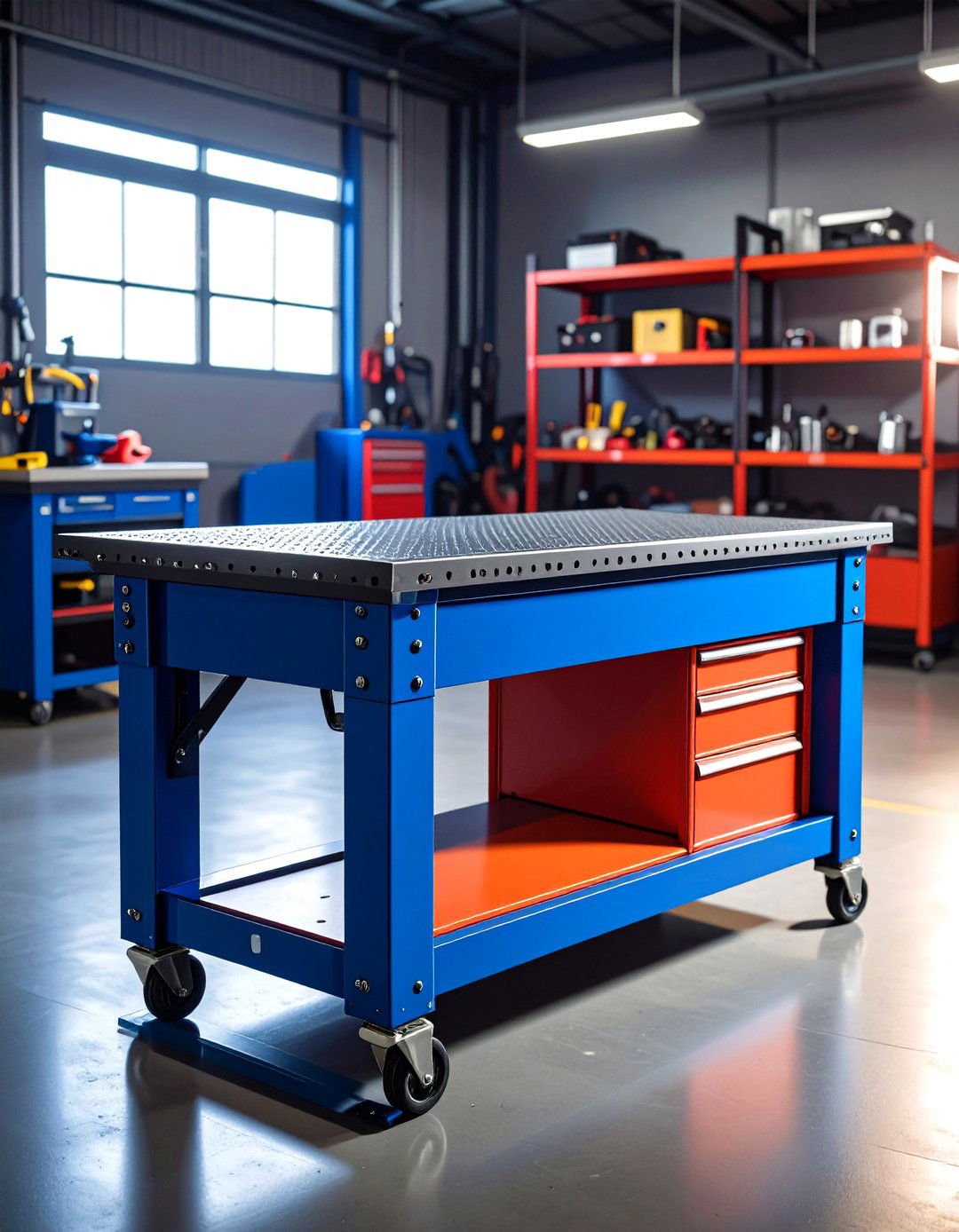
If your projects involve pounding, grinding, or hot metal, swap wood legs for square-tube steel rated to take real abuse. Recent how-to videos show fabricators welding 1/8-inch angle iron into rigid frames, then topping them with replaceable sheet steel so grinding sparks never threaten the structure beneath. Commercial hydraulic legs can bolt directly to the frame for ergonomic height tweaks while still supporting half-ton loads. A slim drawer under the lip stores welding magnets and extra tips, keeping the deck clear for clean beads.
7. Modular Workbench System Grows With Your Needs
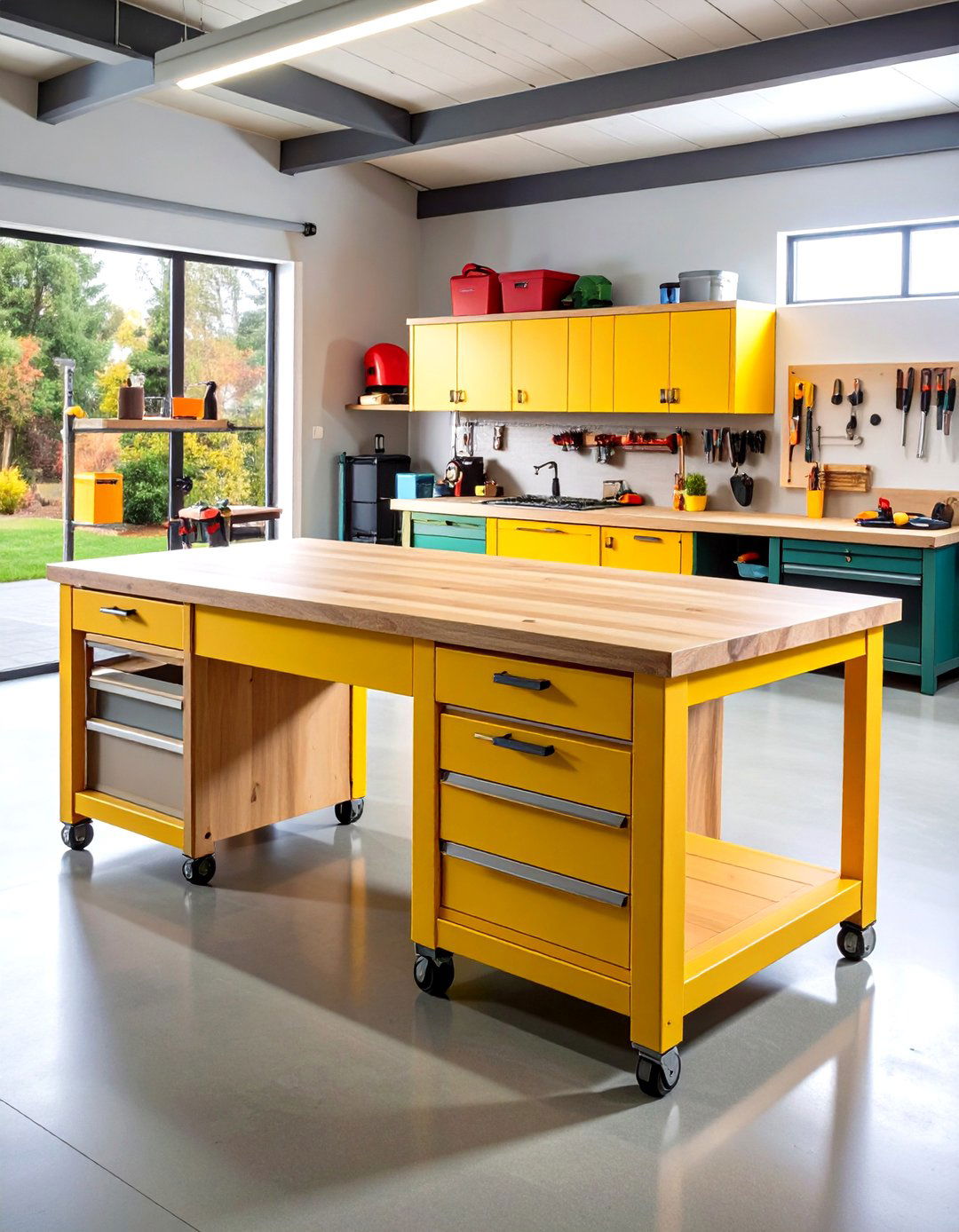
A modular bench behaves like giant building blocks—start with one 66-inch unit and later dock matching cabinets, drawers, or extra tops as your tool collection grows. Hardwood modules with 1.5-inch tops boast 1,500-pound capacities, yet they roll on hidden leveling feet so you can realign everything after uneven-floor shifts. Home-improvement guides rank these systems among the most versatile garage upgrades because they integrate seamlessly with wall cabinets and overhead racks, unifying the whole shop. That expandability protects your investment; you add parts, not replacements.
8. L-Shaped Corner Workbench Unlocks Dead Space
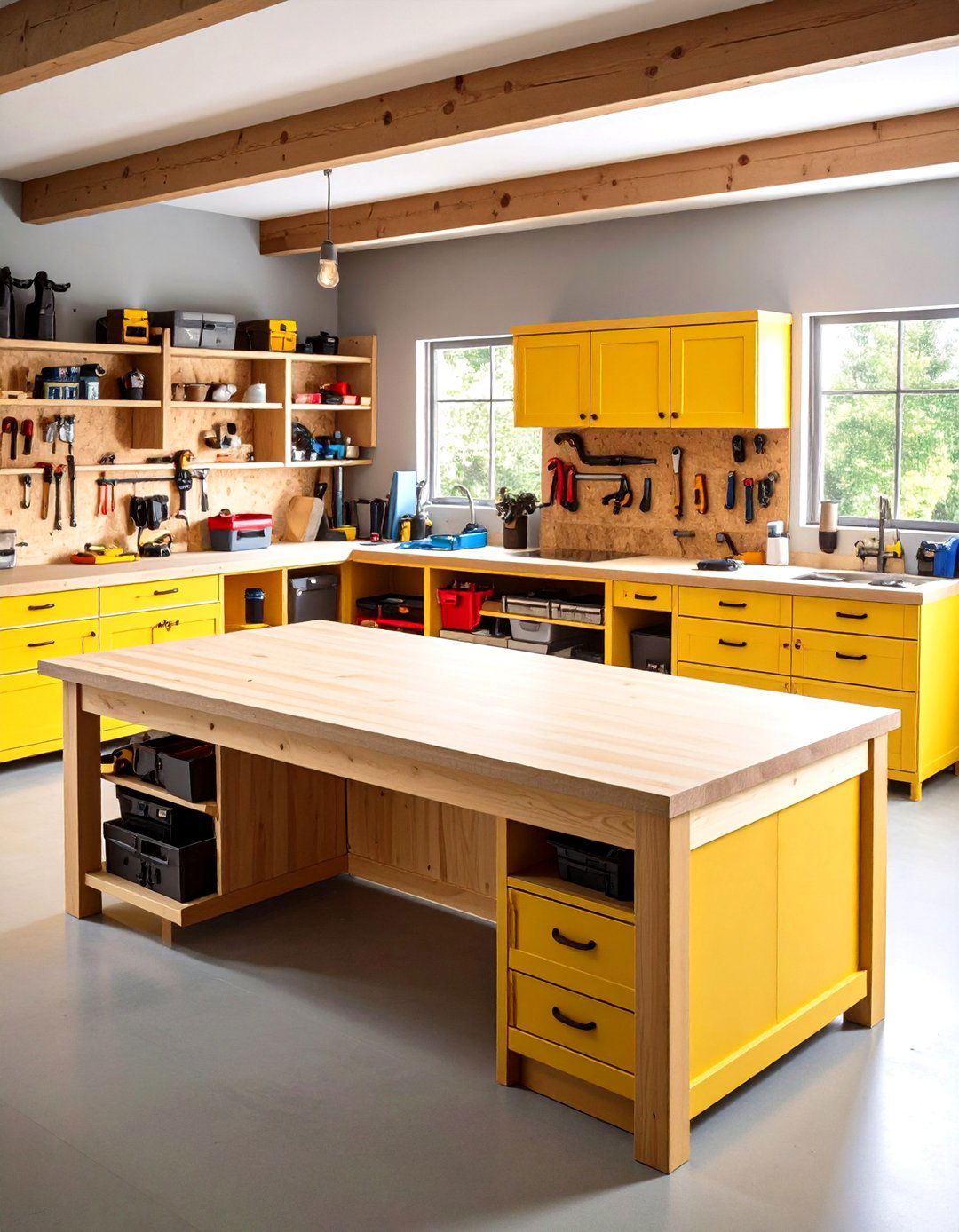
Those awkward garage corners turn into productivity hubs when you wrap a bench along two walls, creating a broad 90-degree surface perfect for assembly on one side and tool layout on the other. DIY forums showcase eight-foot-per-leg builds that keep depth to 28 inches so nothing gets lost at the back. Picture boards packed with corner designs underline how the format maximizes storage beneath and still leaves the center of the room open for vehicles. Add a continuous back ledger to brace the span and your corner bench feels anchored for life.
9. French-Cleat Tool-Wall Workbench for Fast Re-Config
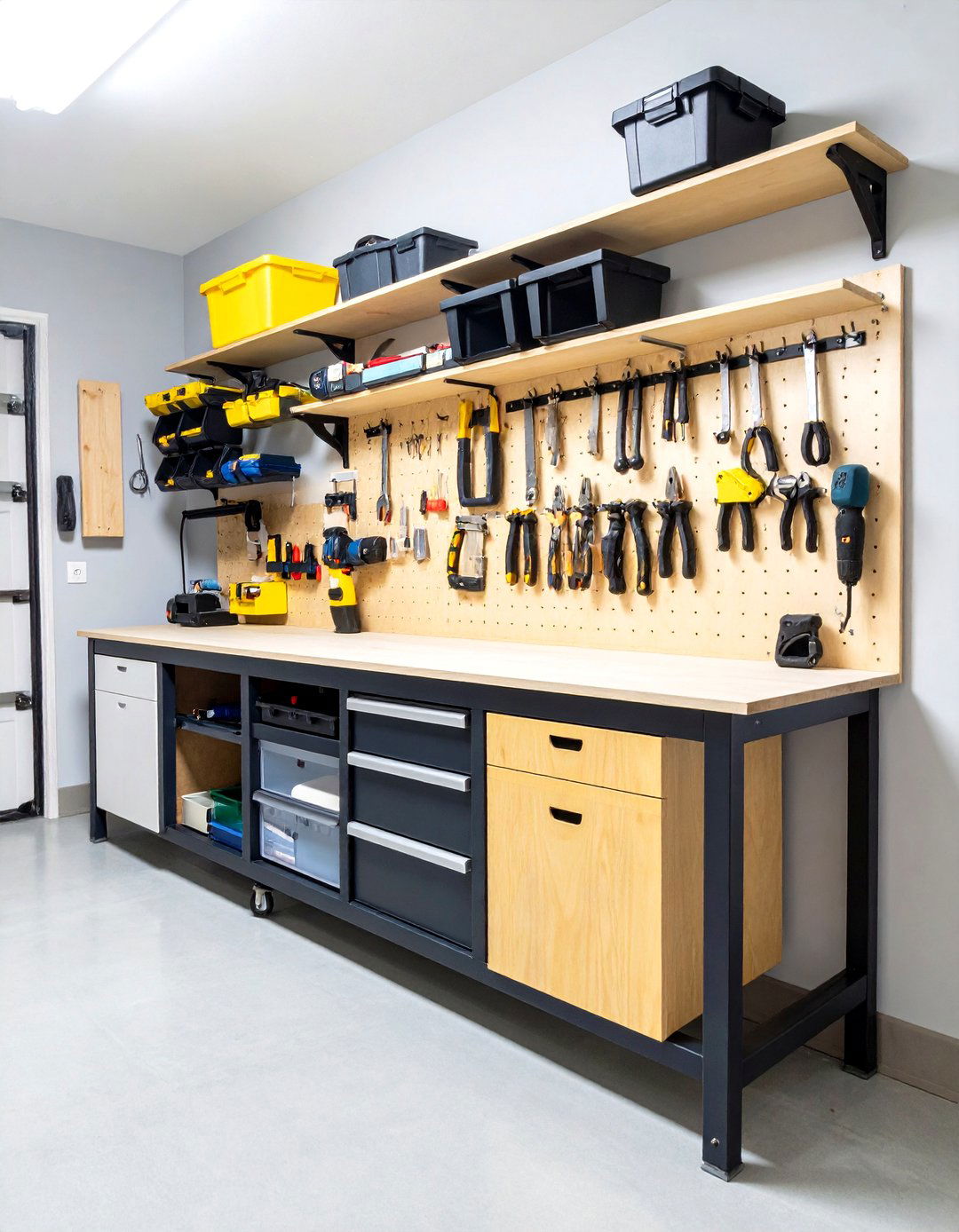
By screwing 45-degree cleats above the benchtop, you gain an endlessly adjustable gallery for hanging chargers, sanding blocks, and even small shelves. Tutorial videos demonstrate cutting the cleats from simple plywood strips and spacing them every eight inches for maximum flexibility. A companion article shows how the same spacing can run down the wall face of a bench cabinet, letting trays slide out only when needed. Tools shift with projects, not with drywall anchors, so the shop layout evolves in minutes.
10. Dust-Collection Mobile Bench Keeps Air Clean
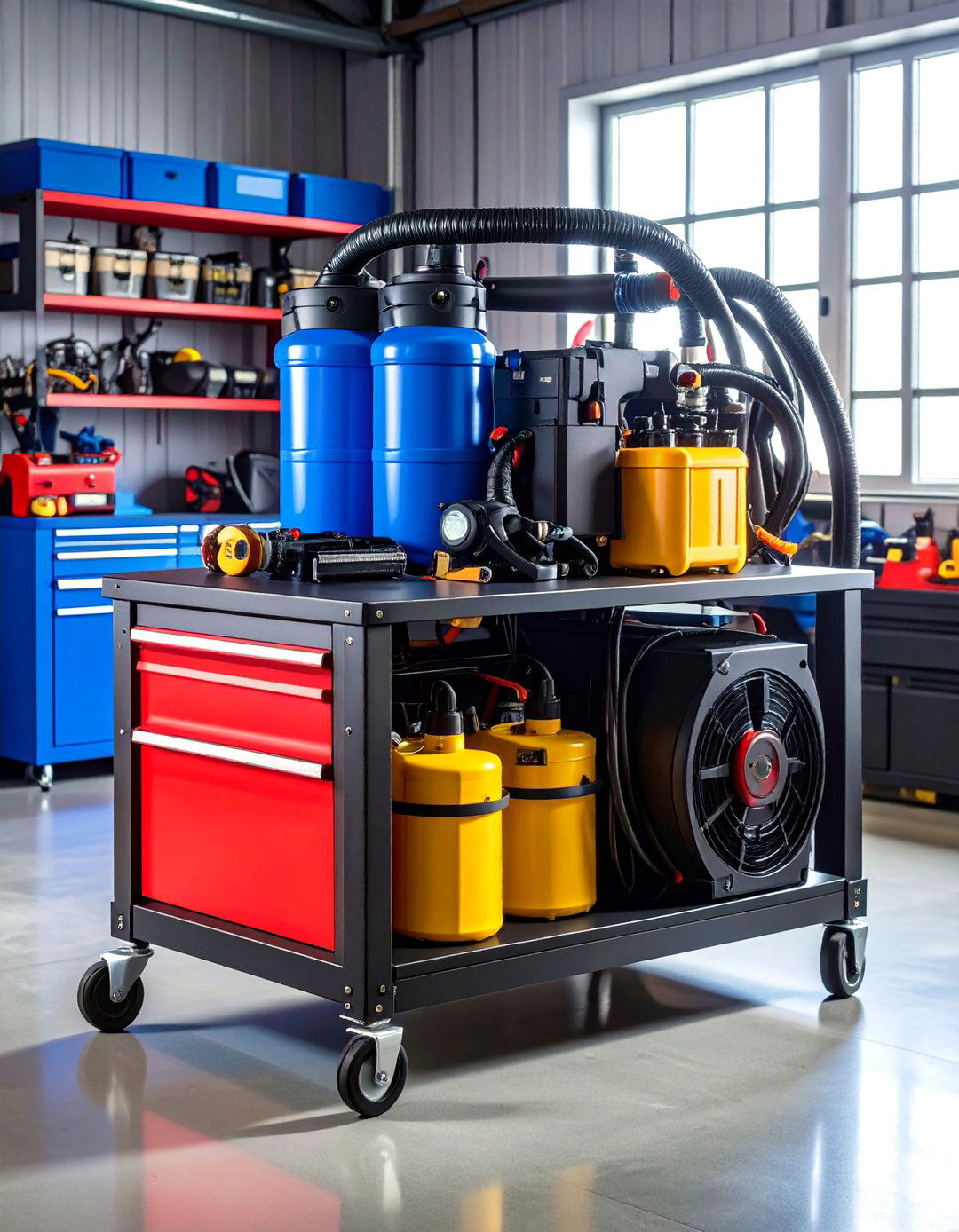
Sawdust quickly buries creativity, so woodworkers are building rolling stations with internal blast-gated piping and a small cyclone hidden under the top. Video walk-throughs reveal how a single two-horsepower collector tucked into a cabinet can service a table saw, router table, and miter saw via quick-connect hoses. Makers who finished similar carts note that automated gates wired to tool switches mean dust extraction starts the moment a blade spins, sparing lungs and cleanup time. Your garage stays shop-class tidy even after marathon milling sessions.
11. Reloading Bench with Vibration Control
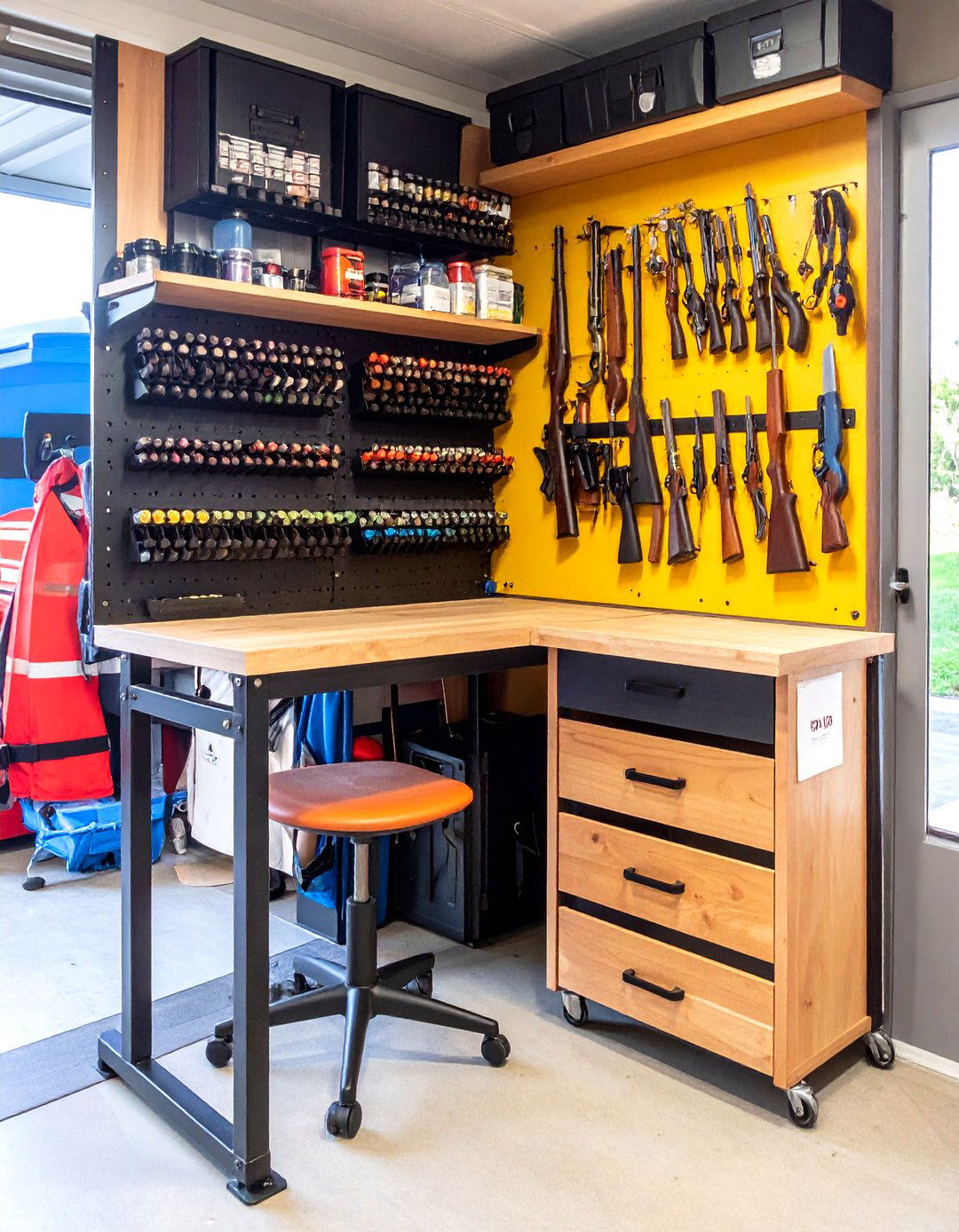
Precision reloaders swear by stout benches isolated from household vibration, and hobby boards share clever tips like bolting 4 × 4 legs directly to floor joists and sandwiching dense rubber pads between the top and press mounts. Curated photo collections feature waist-high shelves for powder scales plus locked drawers that keep primers secure yet close at hand. The resulting setup offers firearm enthusiasts both safety and repeatability while still looking like a tidy piece of shop furniture.
12. Kid-Safe Workbench with Lockable Storage
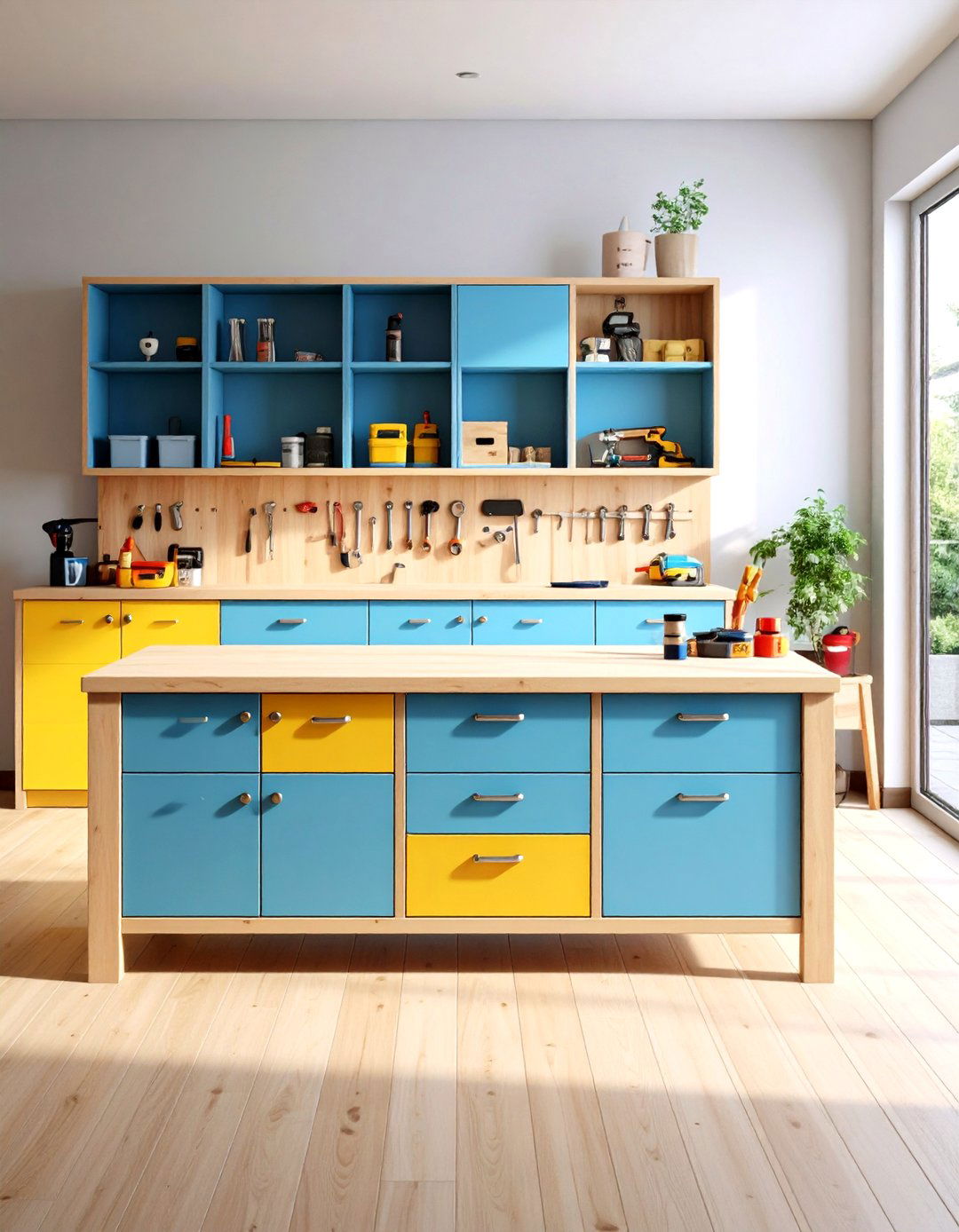
Families with curious youngsters can keep hazardous tools out of reach by adding lockable steel drawers beneath a solid hardwood top rated for 1,500 pounds. Modular garage systems include cabinet faces that accept keyed locks or padlock hasps straight from the factory. Combining those units with a heavy bench frame means chemicals, blades, and projects cure safely behind metal doors while the surface above stays free for homework or hobby time. The peace of mind costs far less than replacing prized chisels—or patching tiny fingers.
13. Convertible Miter-Saw Station Workbench
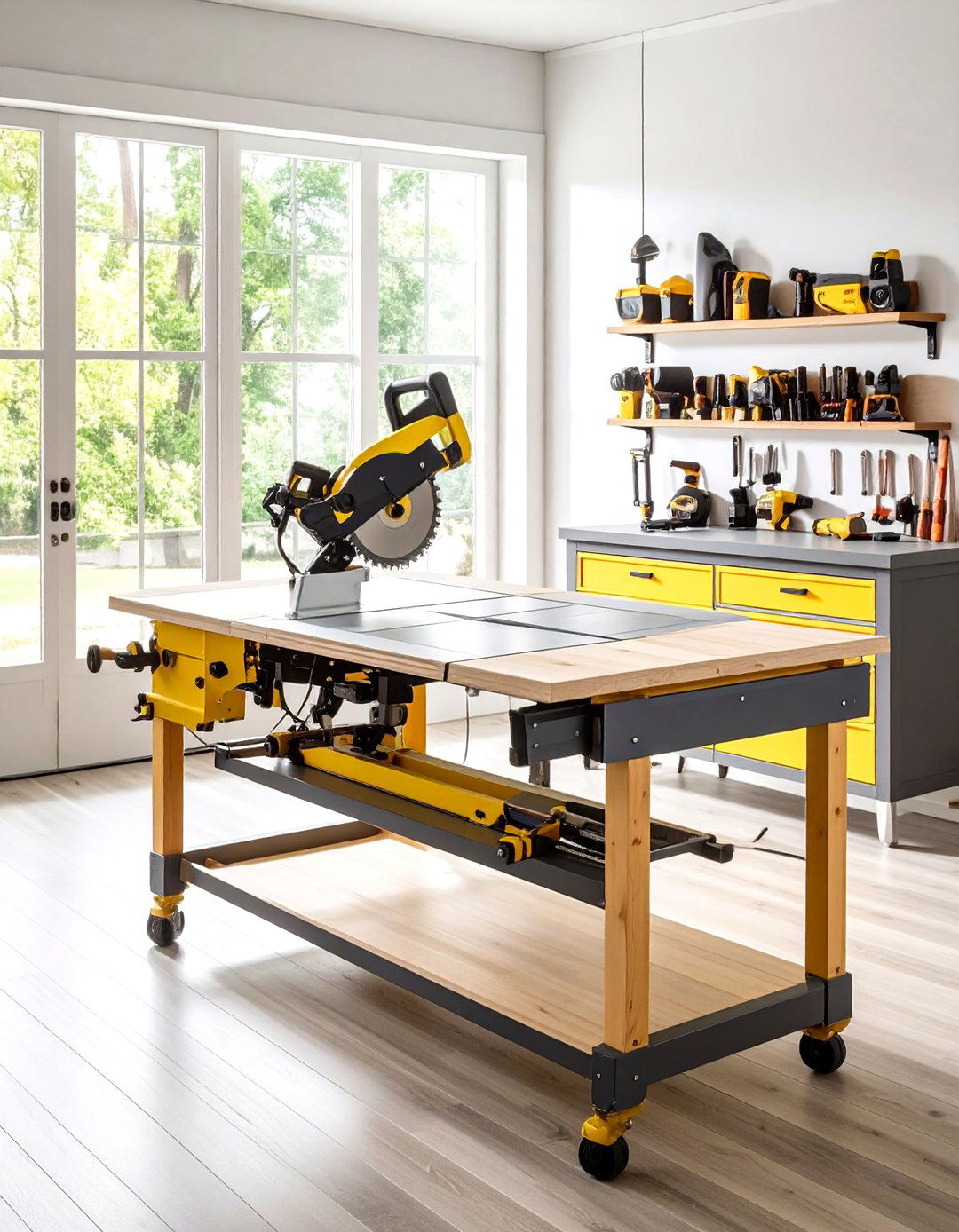
When cross-cutting long boards, a bench that cradles a miter saw level with side wings gives you millimeter-perfect results. DIY plans detail flip-up supports that fold flat when not needed, turning the same top back into plain countertop space. Builders adapting flip-top hardware have even mounted their saw on a swiveling deck that tucks beneath the bench, reclaiming the area for full-sheet assembly in seconds. One surface, two very different roles.
14. Welding-Ready Metal-Top Bench Resists Heat

A steel-skinned bench shrugs off grinder sparks and MIG splatter, letting you fabricate frames without scorching plywood. Recent tutorials outline tack-welding 14-gauge sheet to a tube frame, then fill-welding the seams so hot slag can’t drip through. Ground lugs welded to the underside give you an instant work-lead point, improving weld quality and keeping cables off the deck. When you switch back to woodworking, just lay a sacrificial MDF panel on top and clamp away.
15. Fold-Away Micro Workbench Fits Apartment Garages
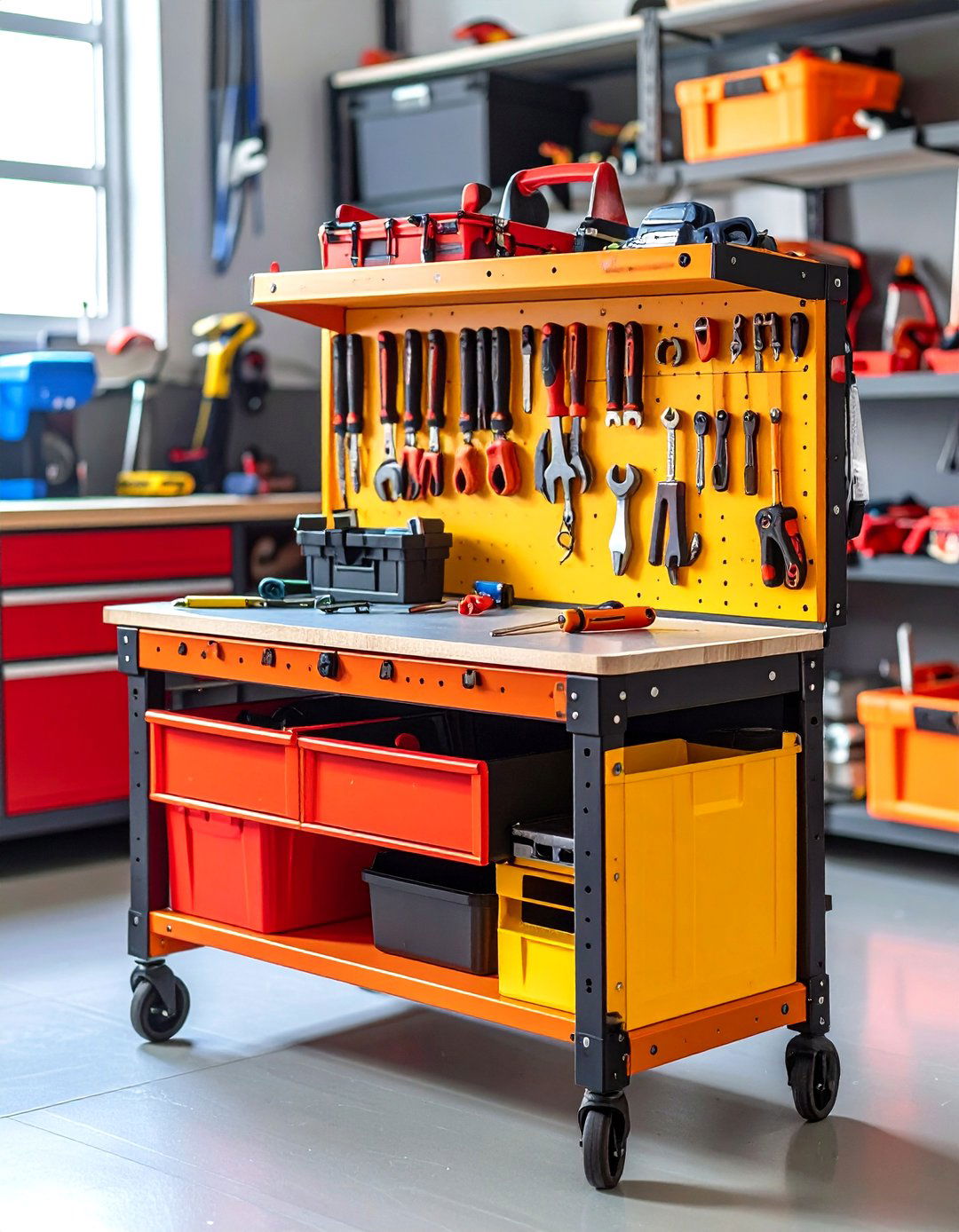
Not everyone enjoys a two-car cave, and apartment dwellers rave about portable benches that fold to suitcase thickness yet open to a 39-inch surface with built-in rulers and angle finders. Retail listings show versions under 24 pounds, complete with carry handles for easy stowing in a closet or trunk. Forum users confirm that pairing the table with a clip-on bench vise and battery tools makes balcony repairs surprisingly painless. Space cramped? Creativity doesn’t have to be.
16. Vise-Ready Bench with T-Track Clamping Grid

Take every vise and clamp you own and anchor them anywhere with a top riddled by aluminum T-tracks. Large mobile workbench plans show builders routing grooves every six inches, then dropping hold-down clamps or bench cookies exactly where the workpiece demands. Another tutorial adds pop-up bench dogs actuated by a simple cam lever, making panel glue-ups faster and flatter. From guitar builds to cabinet doors, universal clamping turns frustration into precision.
17. Outdoor Pop-Out Workbench Extends the Garage
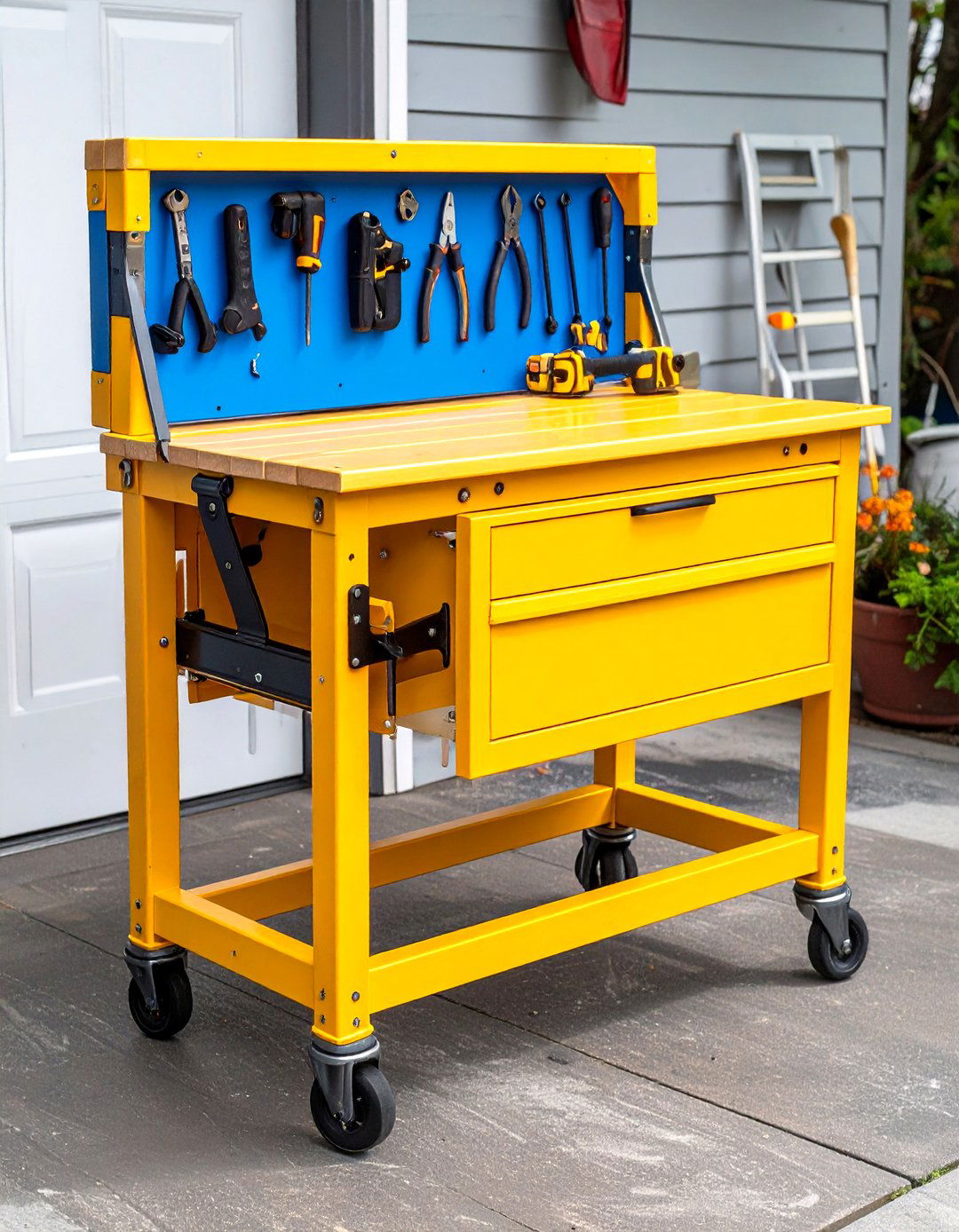
Some garages open to driveways, so a bench that hinges outward under the raised door creates an instant outdoor workstation without stealing interior square footage. Boards highlighting folding concepts show legs that drop automatically as the top swings out, giving full strength even on uneven concrete. Heavy-duty corner brackets resist racking, and weatherproof spar varnish guards against sudden showers, letting you sand or stain where dust blows harmlessly away.
18. Power-Ready Bench with Built-In Outlets and USB
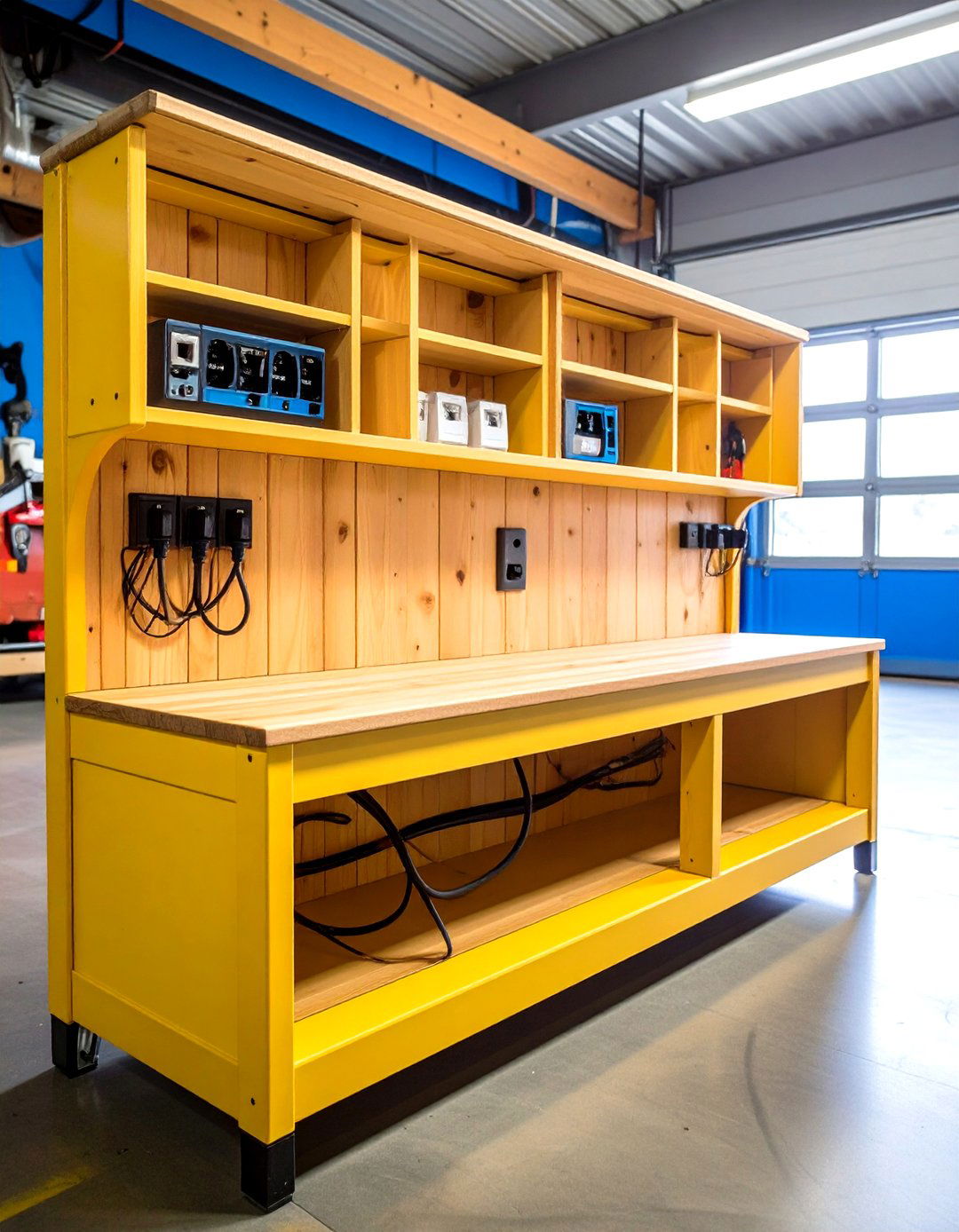
Running extension cords across the floor is a trip hazard, so benches featuring integrated outlet strips and USB ports give every charger and saw a nearby source. Consumer models pair a hardwood top with three grounded receptacles rated for 15 amps plus dual USB-A ports, all protected by a master switch. Mounting the strip flush beneath the rear edge keeps plugs hidden yet accessible, and a shallow cable raceway channels cords neatly to the wall.
19. Multi-Zone Craft and Repair Bench Organizes Hobbies
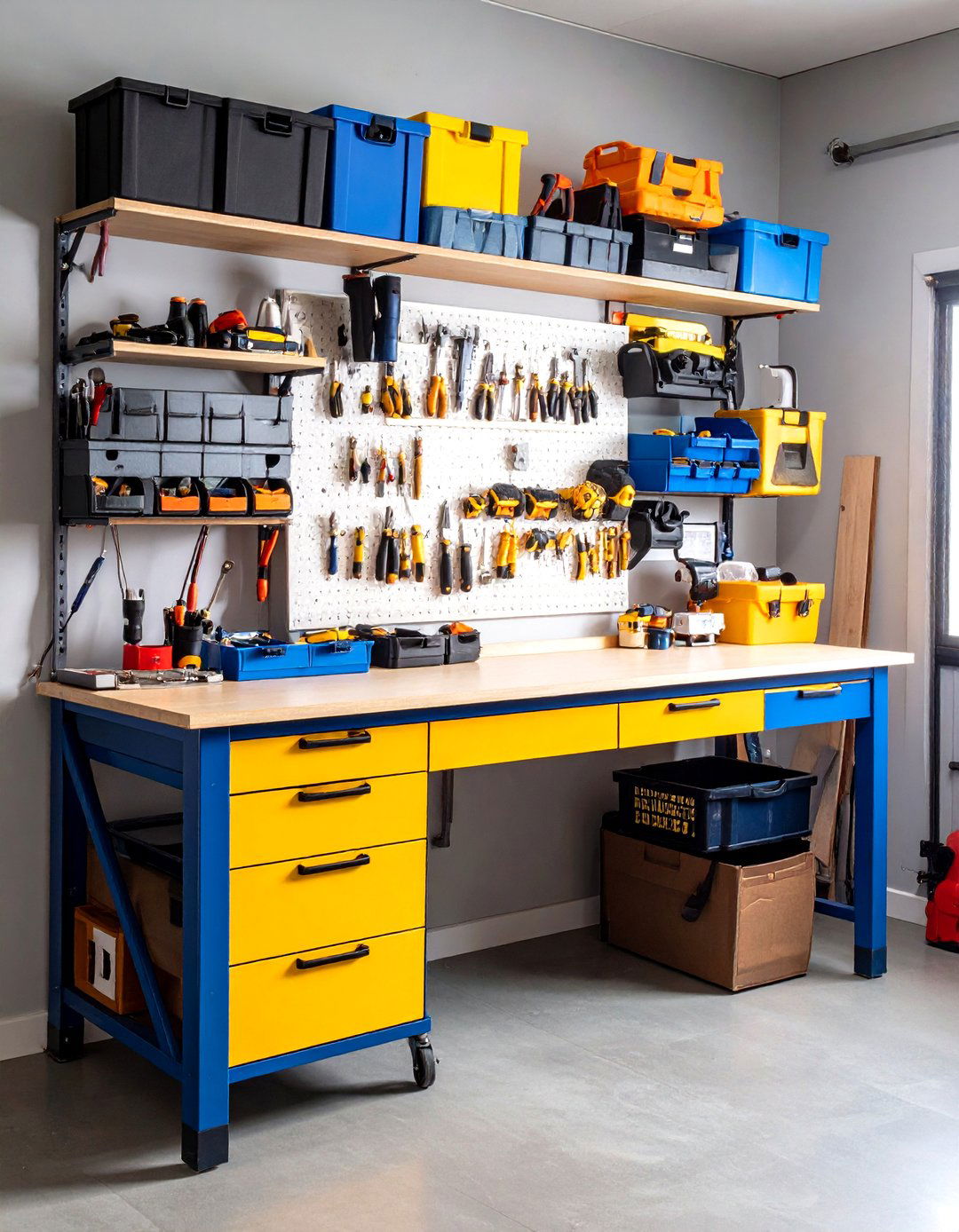
Turning a garage into a true makerspace means zoning: sanding on the left, electronics in the center, and sewing or 3D printing on the right. Home-improvement features recommend combining adjustable shelving, pegboards, and drawer cabinets around a single continuous top so each hobby has dedicated supplies within arm’s reach. Label each zone with colored tape and you’ll switch contexts without clearing the whole bench, keeping momentum alive across crafts.
20. Sliding Tool-Chest Workbench Marries Storage and Surface
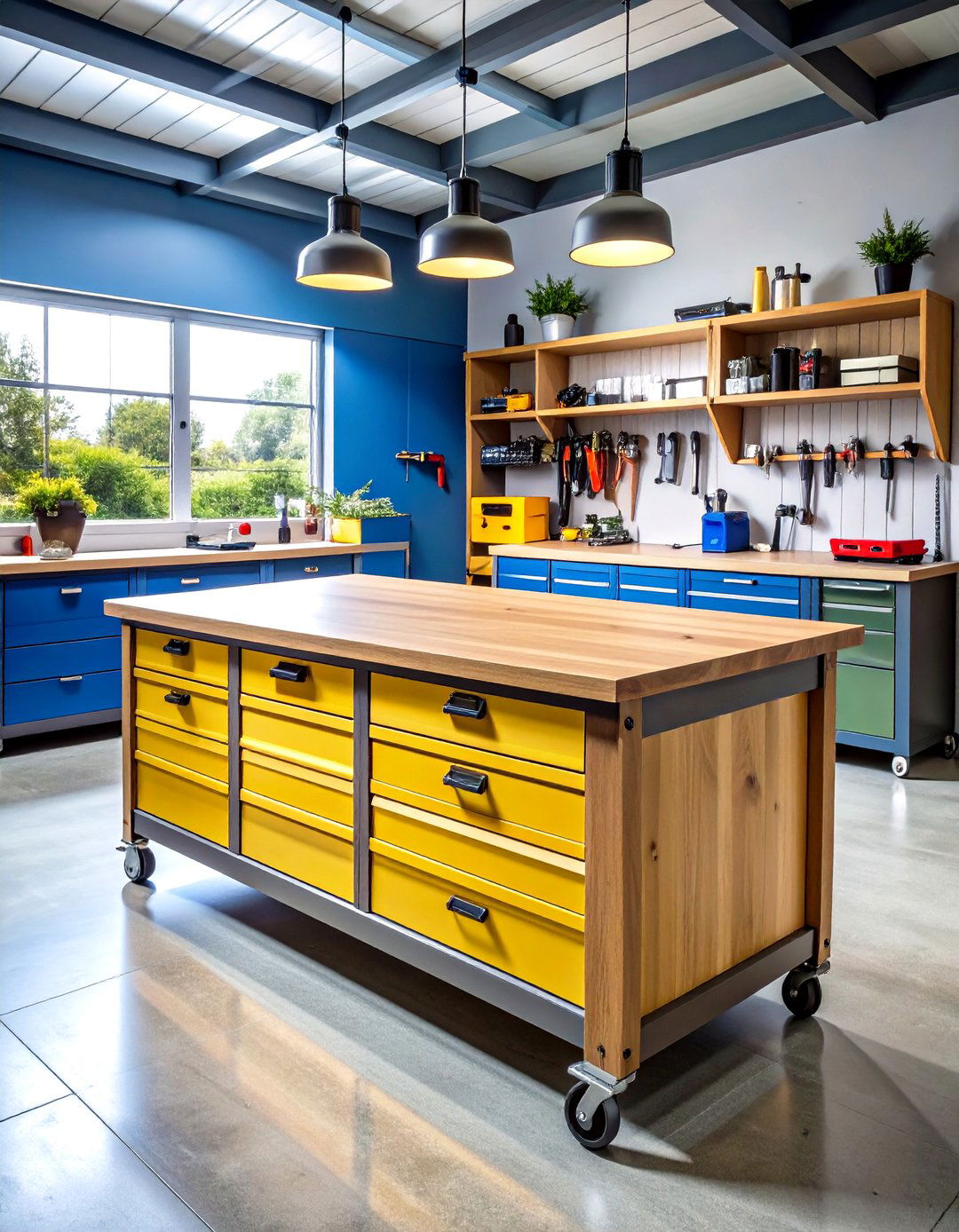
The final idea hides a full-size rolling tool chest under the work surface; slide it out for wrench sessions, then push it back to regain legroom. Modular hardwood benches sized at 66 inches leave enough clearance for standard ten-drawer chests, effectively doubling storage while keeping the top uncluttered. Garage-storage guides rank this combo high because it consolidates short-term and long-term tool spots into a single footprint, perfect for compact spaces.
Conclusion:
From fold-down surfaces that vanish to steel giants that shrug off weld spatter, these garage workbench ideas prove upgrades come in all sizes. Applying even one—adding cleats, wheels, or hydraulic legs—can make your workshop safer, tidier, and more enjoyable to use. Mix and match designs as your projects evolve, and let the bench grow alongside your skills. Your garage becomes not just storage, but the heartbeat of every future build.











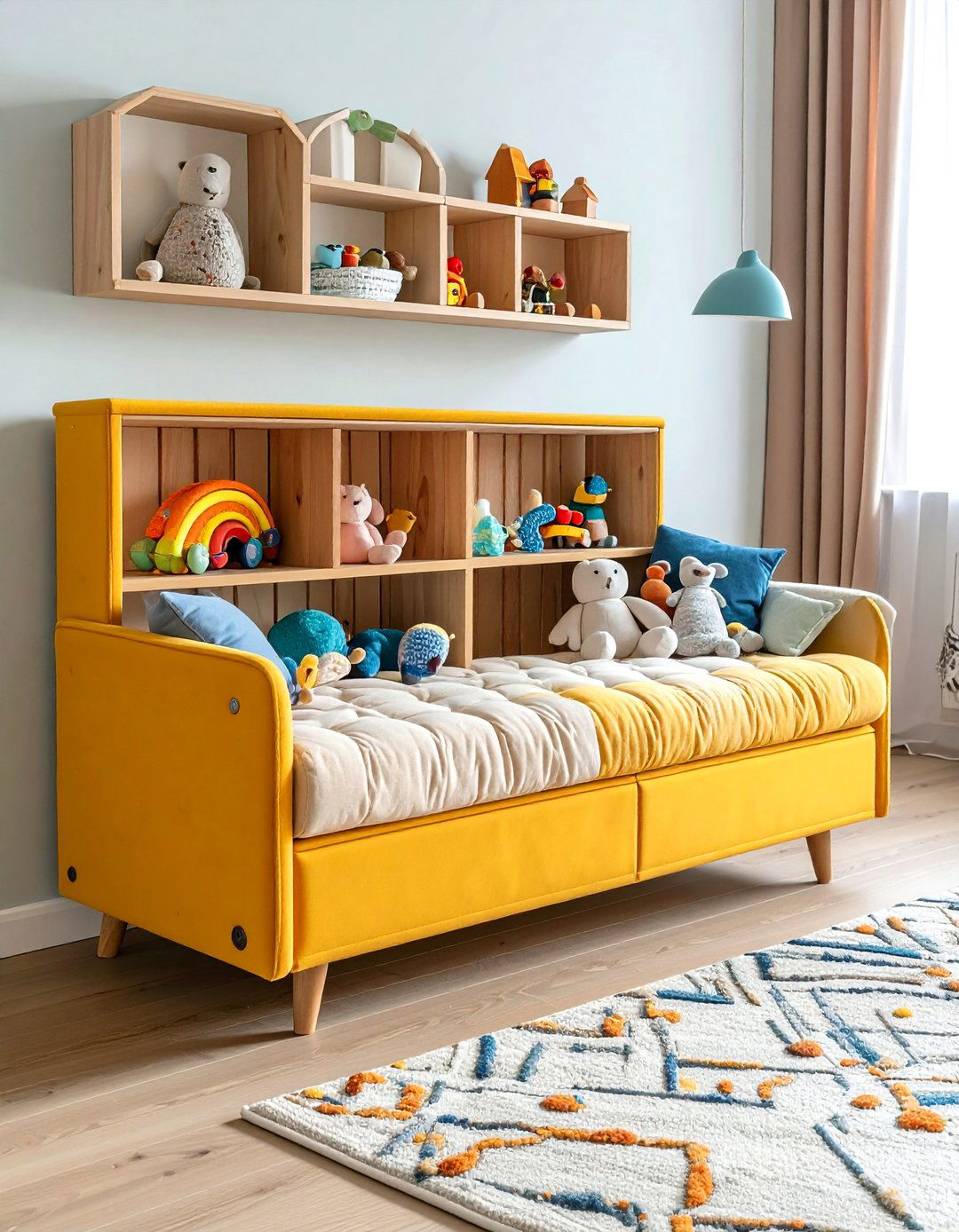
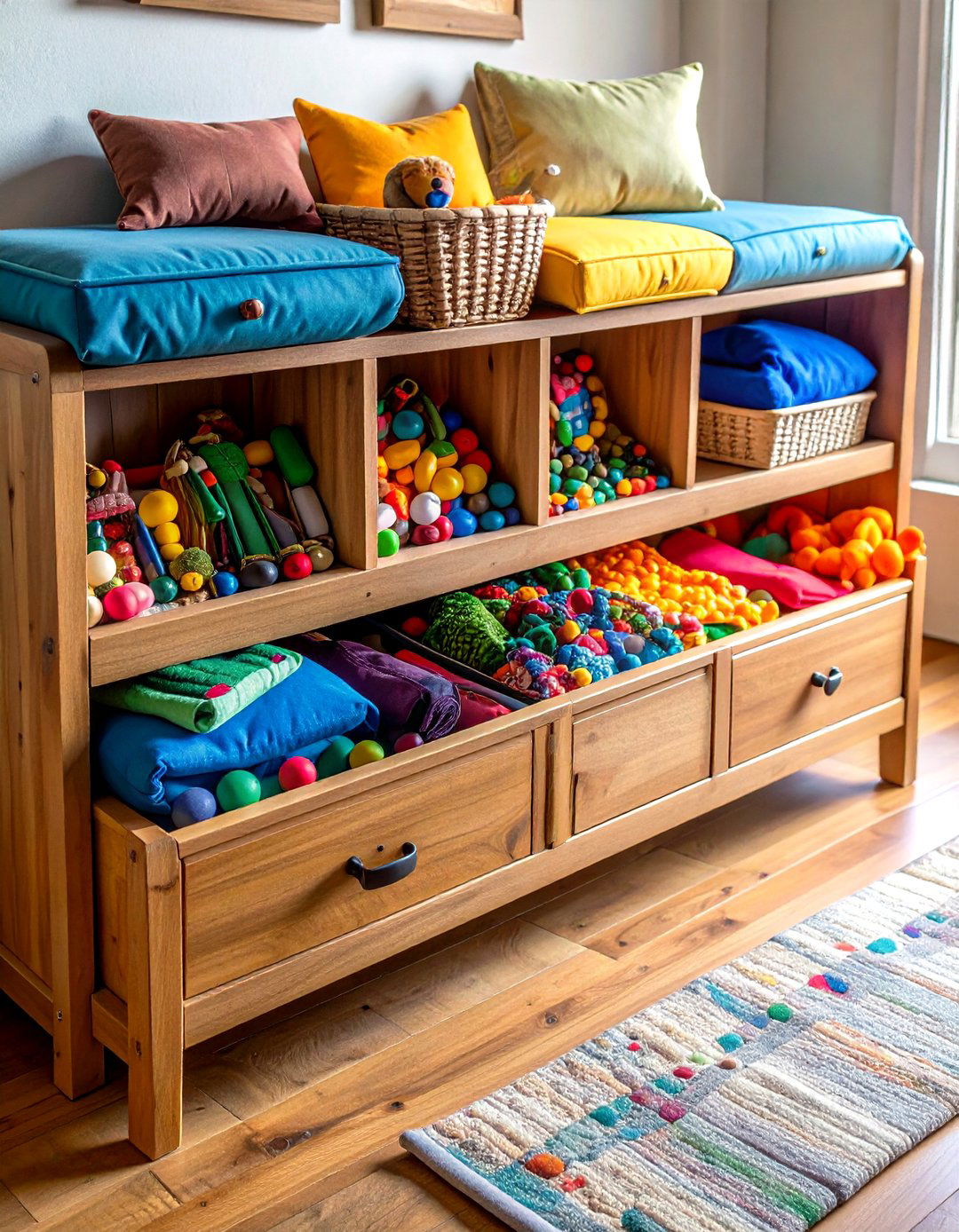

Leave a Reply